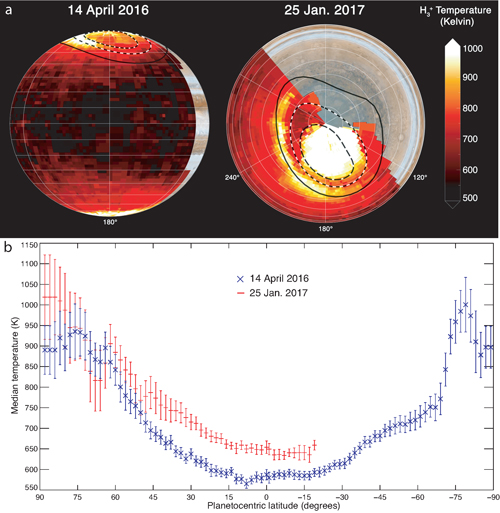A new map of temperatures in Jupiter’s upper atmosphere reveals a solution to the planet’s “energy crisis”
August 5, 2021
An international team of researchers from Japan Aerospace Exploration Agency (JAXA), National Aeronautics and Space Administration (NASA), Boston University, University of Leicester, Space Research Corporation, and the National Institute of Information and Communications Technology (NICT), led by Dr. James O’Donoghue, found that Jupiter’s intense aurora, the most powerful in the solar system, is responsible for heating the entire planet’s upper atmosphere to surprisingly high temperatures.
Overview / Background
Approach / Results / Outputs
Future work / Prospects
Affiliations :1. ISAS, JAXA, Japan, 2. NASA Goddard Space Flight Center, USA, 3. Boston University, USA, 4. University of Leicester, UK, 5. Space Research Corporation, USA, 6. NICT, Japan

[Click picture to enlarge]

[Click picture to enlarge]
Contact
Space Environment Laboratory, Radio Propagation Research Center, Radio Research Institute
TAO Chihiro
E-mail:























